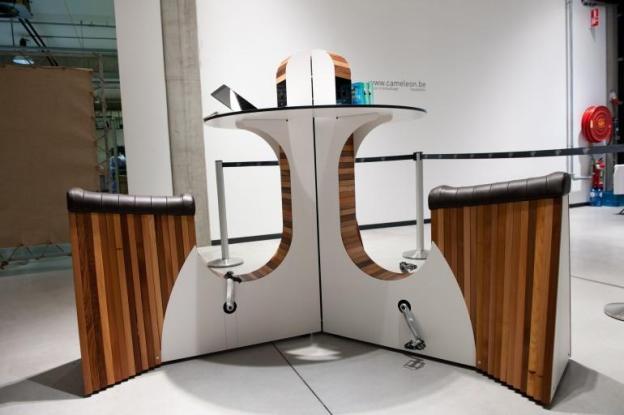
There are several trends in trying to sneak a bit of exercise while you multi-task at work. Some people prefer standing desks and others invest in a yoga ball chair to keep your calories burning as you get things done. While both those methods subconsciously trick you into working out, perhaps it is more effective if you are forced to do a little leg work to even get anything done.
With WeBike, power is generated only when the user pedals from underneath their seat. The work station stands at just about eight feet in diameter with three seats facing the common circle. To get juice going in your plugged in cellphone or laptop, users are required to spin their way to producing 30 watts of electricity per seat. According to the designers, all it takes is 30 minutes a day on the WeBike to get a healthy routine going. And it’s no surprise, of course, since cardiovascular exercises are shown to improve blood circulation, increase metabolism, build stamina, and even offer some brain-boosting chemicals to enhance your memory and decision making process.

Once you’re pedaling on the seat, a digital LED display also shows you how much energy you’re generating. Alternative models of the WeBike also comes in a straight line for lining it up against a wall, or a snake arrangement that zig zags around in a row. If companies are looking to promote healthful lifestyles at work, they might be interested in purchasing the WeBike stations at $13,154 a piece. The pricing does seem a little steep considering how you can basically buy a car with that amount of cash. The company is also working on a rental basis for businesses to try out at various places, such as in the middle of shopping malls, cafes, or during major conferences. Who knows, maybe a greener and healthier living is worth that kind of investment!
Image Credit: Gizmag


